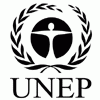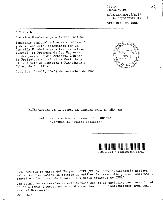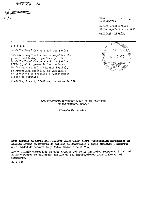The United Nations Environment Programme (UNEP) is the leading global environmental authority that sets the global environmental agenda, promotes the coherent implementation of the environmental dimension of sustainable development within the United Nations system and serves as an authoritative advocate for the global environment.
UNEP work encompasses:
- Assessing global, regional and national environmental conditions and trends
- Developing international and national environmental instruments
- Strengthening institutions for the wise management of the environment
Mission
"To provide leadership and encourage partnership in caring for the environment by inspiring, informing, and enabling nations and peoples to improve their quality of life without compromising that of future generations."
Members:
Resources
Displaying 71 - 75 of 106Alternativas de la ciudad de Caracas para el año 2000
El estudio analiza acciones tendientes a solucionar los problemas que inciden sobre la dinamica de Caracas, evaluando alternativas que van desde la no desconcentracion hasta el traslado de la capital a una nueva ciudad.
Políticas metropolitanas en un contexto de experiencia global
Contiene los comentarios del autor sobre algunos aspectos del Primer Congreso Internacional de Planeación de Grandes Ciudades, realizado en México, junio de 1981. Presenta observaciones respecto a descentralización y políticas de pluralismo cultural, las áreas metropolitanas en el desarrollo regional, contribución del conocimiento tradicional para la planificación metropolitana, y la planificación participativa.
Renta de la tierra, heterogeneidad urbana y medio ambiente
Seminario Regional sobre Estilos de Desarrollo y Medio Ambiente en América Latina
Green Finance for Sustainable Landscapes Joint Initiative of the CPF (GF4SL)
Objectives
Boosting investor interest to increase capital flows towards forest restoration and deforestation-free agriculture.
Other
Note: Disbursement data provided is cumulative and covers disbursement made by the project Agency.
Target Groups
1. The benefits of this projects can be framed as follows: · First of all, through this project, a number of finance institutions are expected to make commitments to shift the way they finance clients in the forestry / agricultural sectors by not only focusing on ‘avoiding harm’ but by building in conditions that lead to positive social and environmental impacts by committing to finance deforestation-free and nature-positive soft commodity production and other forms of sustainable land use. · Secondly, the project strives to converge on a way to frame, measure and monitor impact related to the above by standardizing Key Performance Indicators, and by monitoring frameworks that are applied by impact investors, banks and institutional investors committed to shift capital towards sustainable land use. 2. By de-risking and availing more investment opportunities for SFM, SLM and sustainable agriculture, the GF4SL also aims at influencing national regulatory frameworks to facilitate a paradigm shift to internalizing environmental risks into longer-term agricultural and/or forestry strategies. The project will also impact local smallholders, as additional investment prospects also mean more chances to graduate from subsistence farming to more commercially oriented practices. By priming necessary loans to require SLM and sustainable agriculture methodologies, a ‘top-down’ paradigm shift can be accompanied by a ‘bottom-up’ approach. This will provide for additional livelihood and socio-economic opportunities and in turn positively influence the rural labor-market and reduce urban migration. 3. Additionally, nature-dependent households located near forest areas will benefit as they are usually relying on the collection of non-timber forest products to meet daily needs. As forests are degraded and these ecosystem services are negatively affected, household livelihoods are further reduced. Thus, the preservation and regeneration of sustainable landscapes has significant potential to also protect the most vulnerable and especially indigenous peoples who are even more dependent on natural resources on an everyday basis. 4. In addition to the above global strategies to yield substantive investment opportunities for deforestation-free commodities production under components 1 and 2 of the GF4SL, the project also will engage directly with producer associations, initiatives and smallholders at the local level though the global and regional learning hubs in component 3. Community-based forestry and agribusiness producer groups and enterprises are engaged/trained/empowered to better leverage their rights to forest resources and other natural resources to secure private investment in socially and environmentally sustainable projects. The project will thus increase the awareness of smallholders on the impacts of forest conversion and the often ensuing land degradation on the health of the communities living around the forest, e.g. through smoke and haze from clearing forest lands. This is aimed at supporting lasting change of behavior and decisions through improved risk assessment opportunities at local level when engaging in agricultural activities at the expense of the environment.
Integrated management of Cameroon’s forest landscapes in the Congo Basin
Objectives
The project’s objective is to strengthen the integrated management of Cameroon’s globally important forest landscapes in the Congo Basin to secure its biological integrity and increase economic and livelihood opportunities for forest dependent people.
Other
Note: Disbursement data provided is cumulative and covers disbursement made by the project Agency.
Target Groups
The project will strengthen the governance and management frameworks for forest management in the Cameroon segments of 3 landscapes, with interventions that are anticipated to deliver socioeconomic benefits in 7 targeted councils or municipalities. These landscapes are multi-use systems that are essential to the culture, food security and livelihoods of forest-dwelling IPLCs who live within them. The ecosystems of the landscapes are also vital to residents of the landscapes, and people beyond, for numerous provisioning, regulation, cultural and supporting services they provide. The project will generate socio-economic benefits by maintaining and enhancing the resource base on which IPLCs in the southern forest belt of Cameroon rely. It will directly address competing demands on this resource base by progressing informed and inclusive land use planning in the councils of Ngoyla and Mintom, thereby helping to secure the access rights of IPLCs to critical resources and serving as an important learning opportunity for how access rights can be formally recognized and respected through the national land use planning framework. In all three of the targets landscapes the project will also support IPLCs in establishing modern and sustainable value chains for NTFPs, including through agreements with private sector operators. Simultaneously, the project will strengthen the development of an ecotourism value chain that engages IPLCs and the private sector in the Cameroon segment of the CMRC landscape. Furthermore, the project will support the establishment of a sustainable and socially-responsible value chain for ebony in Cameroon segment of the TRIDOM landscape. In addition to directly increasing income generation for target stakeholders, the Ebony Project will be used to develop recommendations on establishing models of public-private partnerships involving IPLCs. Each of these efforts aim to realize socio-economic benefits for rightsholders, while incentivizing them to manage their resources sustainably. As such, the project, will work to increase productive and sustainable employment for IPLCs in rural forest areas. The project seeks to achieve a 10% increase in income from enhanced value chains and public-private partnerships for at least 450 people (of which at least 50% women).





